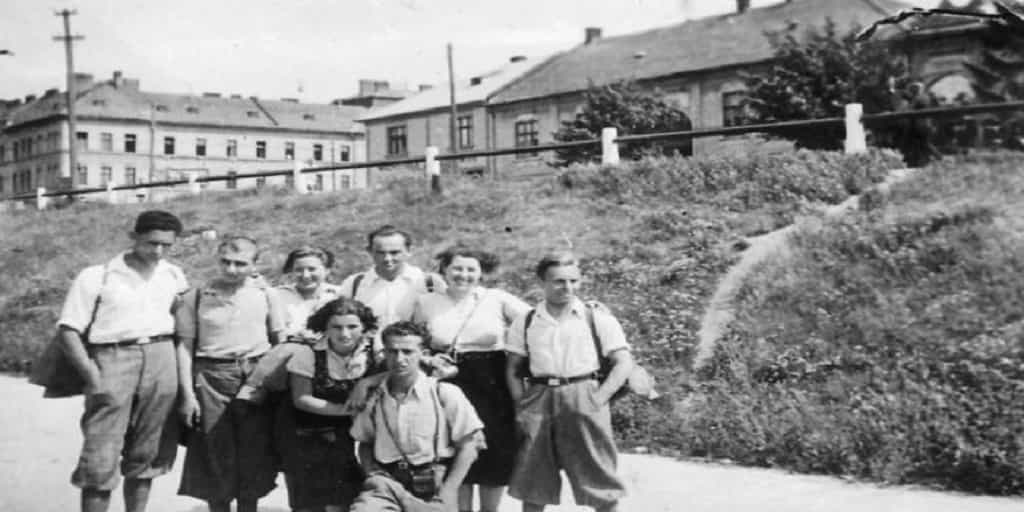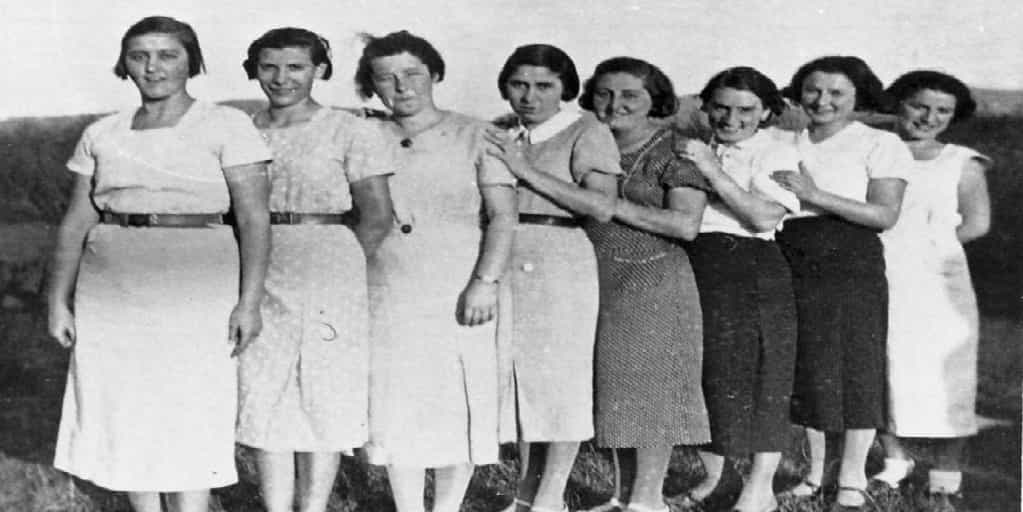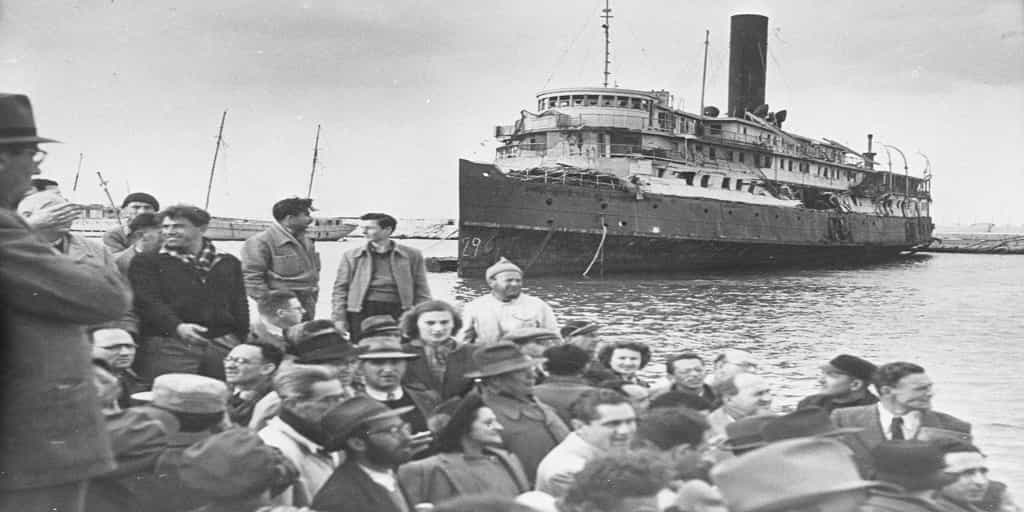There were five major waves of Jewish immigration before the State of Israel was born. We’ve talked about them before. The First Aliyah was one of great hope and inspiration. The Second Aliyah focused on state building and creating the important institutions needed for the future Israel. The Third Aliyah built up the Kibbutz, which was, and is, a cornerstone of Israeli society. The Fourth Aliyah was one of great growth and business. And now we have finally arrived to the Fifth Aliyah to Israel.
So what is the Fifth Aliyah to Israel?
The Fifth Aliyah to Israel lasted from 1933 to 1939, yet the bulk of immigration was from 1933 to 1936. It is also known as the German Aliyah because of the high number of German Jews who came to the land. In fact, twelve percent of all German Jews came to Palestine during this time.
However, Jews from other countries did make aliyah as well, including from Poland, Russia, and Hungary.
Despite the world economic crash on Wall Street in 1929, by 1933 there was a huge investment in the land in Palestine. This made this aliyah unique.
In addition, the Fifth Aliyah to Israel was larger than all of the other waves of Jewish immigration put together.

What happened between 1933 and 1939?
The situation in Germany was getting tense due to the rise of Hitler and the Nazi party. Many of the Jews living in Germany did not believe that anti- Semitism could be on the rise in the country that they loved so much- a country they were so devoted to; a country they contributed so much to. Yet many in the German Jewish community did leave land under Nazi control.
But because the Nazi party was in power in Germany, the Jews who moved to Palestine couldn’t bring their money with them. Haim Arlosoroff, head of the Political Department of the Jewish Agency, came up with a plan, also called the Transfer Agreement.
German Jews had to deposit money into a specific German bank that transfer the money to the British authorities in Palestine. The British would then buy German products here. When the Jews arrived, they would get the products or the money from those products.
This meant that many German Jews could not have taken out all of their money, but just a percentage of that money. However, international Jews become angry about this deal because they were boycotting Germany and the Nazi Party. What they did not realize that it very much saved these Jews’ lives.
Remember that the Fifth Aliyah was also called the German Aliyah? It wasn’t just because of the numbers of German Jews coming to Israel. It was also because of the cultural influences these German immigrants had on Jewish society.
The German Jews who came to the land were highly- educated, had some money, and oriented with the technology developed in Europe, an insurance system. Because of this, once the German Jews were brought into the Jewish population of Palestine, they were able greatly advance society in the land.
Individual Story in the Fifth Aliyah
Eric Mendelsohn is one example of how the German Jewish great influence on the land. He was an architect, especially known for his expressionist architecture in the 1920’s and for developing dynamic functionalism within his projects.
He came to Israel with the rise of Nazism, and began working in the land as an architect. His style influenced the building of homes and buildings throughout the Fifth Aliyah. We can see Mendelsohn’s influence on architecture in Israel even today.
Some of his work included Chaim Weizmann’s (the first president of Israel) house, and the Weizmann Institute in Rehovot, Israel.
The Arab Riots of 1936- 1939
The Arab Riots of 1936 began with strikes throughout the land, such as at Jaffa Port and other business centers. It started as a result of high tension between the Jewish and Arab populations. The Arab population felt threatened by the growing Jewish population.
The strikes closed the Jaffa Port, the major port of the land at the time. This was a big mistake because the Jewish communities were a huge consumer of the food the Arab populations produced. With no one to buy those products, the products would rot. Furthermore, those Arab farmers weren’t getting an income.
Violent outbreaks spread throughout the land. This only led to more tension between the Arabs, Jews, and British.

The Response to the Riots
The Jewish merchants began to suffer as well from these strikes and riots. So the Jewish merchants went to the British Authorities to receive permission to open a separate port in Tel Aviv.
The opening of the Tel Aviv Port damaged the Arab economy even more. Yet it helped diversify the Jewish economy and make it more self- sufficient….And so began the separation between the Arab and Jewish economies.
The overall Jewish response, although not accepted by everyone, was one of restraint. Rather than to engage with the Riots, they would focus on developing their state institutions.
One response was to join the Jewish police force, trained by the British. However, the British, unlike the Jews, won’t restrain themselves as time continued. The British brought Charles Orde Wingate, an officer in the British army, to create the Special Night Squad (SNS). The goal was to track down those they considered terrorists. This is the beginning of Israel’s counterinsurgency.
Members include Yigal Alon, Yitzhak Sade, and Moshe Dayan. The Jewish population got exactly what they wanted: training without getting involved in the Riots. Wingate was extremely successful with the SNS, yet the British did not like that he got so close to the Zionists. Their response? They sent him away.
There are three places named after Wingate in Israel today:
- Wingate Institute (an institute for physical education, athleticism, and physical therapy)
- Yemin Orde (a home for children from problem families)
- Wingate Square in Jerusalem
Further settling of the Land
The Jewish population also began the Tower and Stockade movement during the Fifth Aliyah to Israel. They were in trauma from the Riots in 1929 and apprehensive it would happen again.
Overnight Jews would build a tower and a fence around it in order to fill in the blank spaces of Jewish owned land. The British allowed this to happen. Once a fence and a tower were built, it would be legal for Jews to build more formal towns.
During the Fifth Aliyah to Israel tower and stockade settlements sprouted throughout the land. We can still some of them today.
Peel Commission of 1937
By 1937, in the middle of the Fifth Aliyah to Israel, the British have had enough of the tension and violence. So, the British sent Lord William Peel to investigate all of the issues unfolding in Palestine, from the Arab Riots to economic issues. It was a very serious commission.
Peel, therefore, very quickly came to very serious conclusions:
- There are two national movements that lay claim to the same place that cannot be reconciled.
- The huge inflow of Jews is what is upsetting the Arabs, so let’s remove this. Let’s FREEZE things.
Yet with 40,000 Jews in the land, the Jewish community is now less willing to compromise.
For the first time the idea of partition of the land between Jordan River to the Mediterranean Sea came up. Eighty percent of the land would be Jewish, and twenty percent would be Arab, yet the Jewish and Arab populations in the Jewish state would be equal. There would be a British presence in Jerusalem, Bethlehem, Haifa, and Jaffa.
Why do the British want those cities? Religion and trade. Jerusalem and Bethlehem are religiously significant for Christian Britain, while Haifa and Jaffa were essential for trade and oil.
NO ONE accepted this plan: Jews, Arabs, AND British.
The following Woodhead Commission decided the Peel Commission could not happen.
White Papers in 1939
What did come out of the Peel Commission was the White Papers in 1939. The White Papers limited the numbers of Jews who came to Palestine per year. They decided that only 15,000 Jews could enter the land every year for the next five years. A total of 75,000 could have made it, but only 60,000 did.
There were also limits on buying and expanding land. Jews could not just buy land anywhere. In fact, it became very difficult. There was an exception in the Negev because land ownership was unclear.
The Jewish leadership used this to their advantage. Many places were created as research centers. While sometimes that was just the excuse to build, research really was done. That research is going to be essential during World War II.

World War II Breaks Out
However after all of this, when the Commission and the White Papers don’t seem to be of much help, the British, French, and Americans convert to passivity because of the amounts of people killed.
The British declared that they have fulfilled their promise of the Balfour Declaration. Shortly after WWII breaks out.
This posed a huge dilemma for the Jewish population in Palestine who face the horrors about to unfold in Europe and British immigration restrictions.
One David Ben Gurion will say:
“We will fight with the British as if there is no White Paper, but we will fight against the British like there is no War.”
And so ends the Fifth Aliyah to Israel .
Conclusion: What can we learn from the Fifth Aliyah to Israel ?
To begin, timing is of the essence. Just like the Jewish population took advantage of moving money form Germany to Palestine, creating the Tel Aviv Port, and establishing the Tower and Stockade settlements, we must know when to take hold of opportunities allowing our dreams to come true.
In addition, we must learn to work together. All of the Jews coming to Israel had a dream–establishing the Jewish State. Did they all have the same idea about bringing about? Of course not! But they worked together, collaborated, in order to make their dream come true. When was the last time you worked together with someone else to make both of your dreams come true? It’s worth trying out.
The Jewish response to the Arab Riots was one of restraint. That is often a value we forget today. Rather we insist on having everything we want, and to have it now: fast food, next day shipping, credit cards, and so much more. To restrain ourselves and to wait could be a worthy characteristic to bring back.
Lastly, to dream big. The people who came to the land during all five of the waves of immigration dreamt big. To create the first Jewish State in 2,000 years was a BIG dream. No one thought it would happen, but here we are sixty- eight years of an independent Israel. What do you think we can do if we dream big?





